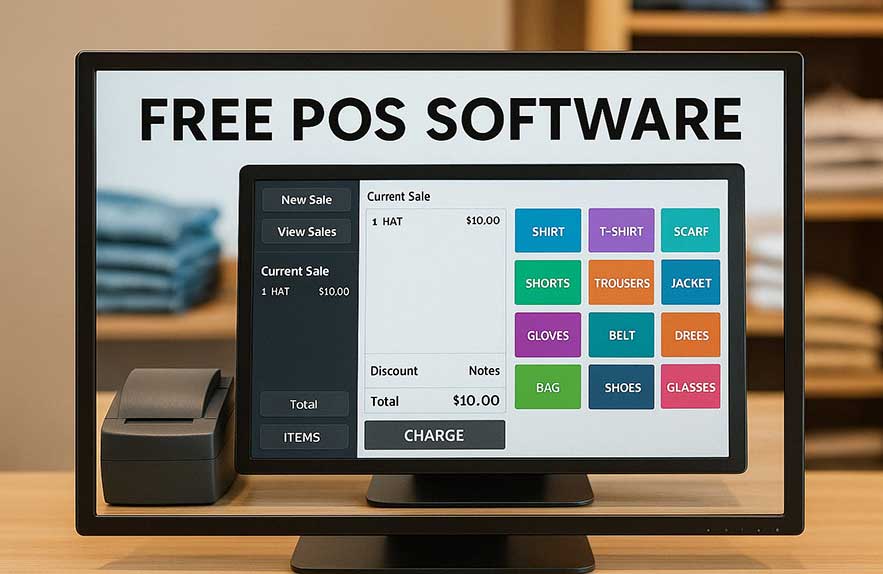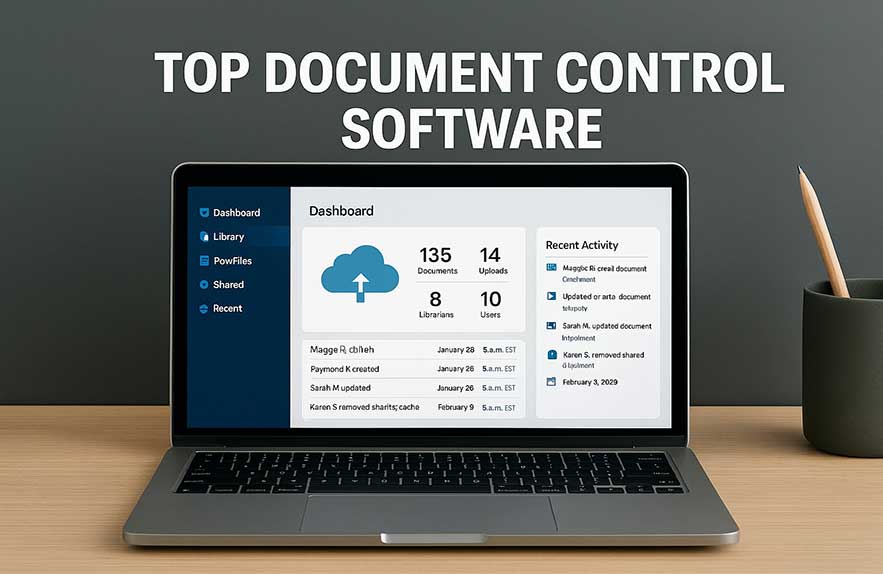
Understanding Free POS Software and Why It’s Gaining Popularity
If you’ve ever tried to run a small shop or café, you already know how fast the little things pile up — receipts, stock counts, keeping track of daily sales. A point-of-sale system makes all of that easier, but the price tags on some of these tools can be enough to make you hesitate. That’s why a growing number of small business owners are giving free POS software a serious look.
In the past, setting up a POS meant buying expensive equipment and paying monthly fees for the software. Now? You can get started with just a tablet or a laptop, and a free tool that does 90% of what paid systems offer. For someone opening their first retail counter or trying to modernize a family business, that’s a big deal. Some of these tools even include built-in inventory tracking, customer profiles, and cloud backups, all without charging you a cent.
And it’s not just about saving money. A good POS system helps you work faster and with fewer mistakes. You know exactly what’s selling, how much stock you have left, and which products are getting ignored. If you’ve ever scribbled a note to reorder something and then forgot — you know how helpful it is to have software doing the remembering for you.
More people are searching online for things like free pos software for small business or free pos software download because they’ve realized you don’t need to spend a fortune to get started. In fact, we’ll cover a few solid options later in this article — tools that people actually use in real shops and cafés every day. Some even come with helpful communities and customer support, which makes things much less stressful if you’re not a “tech person.”
If you’ve been putting off upgrading from a cash drawer and notebook because of the cost, free POS software might be exactly what you need. Stick around — we’ll walk through the best ones, what they can do, and how to find the right fit for your business.
Table of Contents
Key Benefits of Using Free POS Software
When people hear “free software,” they sometimes assume it’s going to be clunky or limited. That’s not the case with most of today’s free POS software options. These tools have come a long way. Many of them are built by serious developers, some of whom also offer paid versions with more advanced features. But for a small business owner starting out, the free tier is often more than enough — and in many cases, surprisingly good.
First, there’s the obvious one: cost. If you’re opening your first store or trying to cut back on monthly expenses, not having to pay for your POS software is a relief. Instead of spending $30 to $100 a month, you can put that money into inventory, signage, or marketing. And you’re not sacrificing key features — most free tools still let you ring up sales, apply discounts, and track what’s selling in real-time.
Another huge plus is ease of use. Tools like Loyverse or eHopper are built for people who don’t want to spend days reading manuals. They come with clean, touch-friendly interfaces that work great on tablets, so you don’t need any special hardware. You could set one up on an old iPad or a basic Android phone and be ready to go in an hour or two. It’s ideal for pop-up shops, food stalls, or even local repair businesses that just need something simple and reliable.
Inventory management is where things get interesting. With a good POS, you can see exactly how many of each product you’ve sold and how much stock you’ve got left. No more guesswork or scribbled notes on a receipt. This alone makes a system like free point of sale software worth trying. Some platforms even let you set low-stock alerts or import product lists using spreadsheets, saving you time on setup.
And let’s not forget remote access. If you use a cloud-based system, you can check your sales from home, see how your team’s doing, or close out the register without being at the store. That flexibility is especially helpful if you’re managing more than one location or want to take a day off without losing visibility. If you liked our guides on lowering CPU usage or clearing cache in Windows 11, this kind of control over your business software is very much the same idea — work smarter, not harder.
Overall, the benefits go beyond just saving money. It’s about gaining tools that help you operate better — without making things more complicated. In the next part, we’ll take a closer look at some real-world examples and actual free POS systems people are using right now.
Top Free POS Software Options Worth Trying
There are plenty of free POS tools out there, but not all of them are created equal. Some are great right out of the box, while others feel more like a demo for paid features. To save you time, here are a few standout options that small business owners actually use — from cafés to retail counters and mobile services.
Loyverse POS – This one pops up in nearly every conversation about free pos software, and for good reason. It’s clean, easy to set up, and works beautifully on both iOS and Android. You get inventory tracking, receipt printing, and real-time sales analytics — all for free. Some paid add-ons are available, like employee management or advanced inventory, but they’re optional. Users love its intuitive interface and say it’s perfect for food trucks, market booths, or any business with a small footprint.
eHopper – This system is surprisingly powerful for a free tier. It supports multi-item transactions, taxes, discounts, and can even handle split payments. The free version is best suited for single-location businesses, and while the interface isn’t quite as polished as others, it’s functional and stable. eHopper also has a desktop mode, which is handy for those using a full-size POS station. Many users say the reporting is clear, and customer support is responsive even on the free plan.
Square POS – While not fully free in all regions, Square offers a zero-cost starting point with excellent features. It’s especially popular among boutique retailers and service providers. You get a sleek interface, integrated payments, and free cloud syncing. Just note that Square makes money through its payment processing fees, so it’s best for businesses comfortable using their card readers. A bonus is their professional hardware line, which works out of the box if you scale up later.
Imonggo – A lesser-known option that has a loyal niche following. Imonggo is web-based, which means you don’t need to install anything — just log in and go. It’s simple, light, and great for shops with modest needs. It includes inventory, sales history, and basic analytics. Some users say it feels dated compared to flashier apps, but if you want a no-nonsense tool that works, it’s worth a look.
These systems are actively used by small business owners in real-world settings, not just software review bloggers. Each of them offers different strengths, so which one you choose depends on what kind of operation you’re running. Coming up next, we’ll help you match the right POS system to your business type — whether you’re running a fast-moving coffee shop or a low-volume retail store that needs basic tracking.
How to Choose the Right Free POS Software for Your Business
With several strong options out there, the big question becomes: which one’s the right fit for you? The answer depends on the type of business you run, how you accept payments, and what features matter most to you. This part of the guide will help narrow it down — because not every system is built for every shop.
If you run a food truck, a market booth, or anything mobile, Loyverse POS is a top choice. It’s one of the most popular pos software free solutions that doesn’t cut corners. You can set it up on a tablet, skip the receipt printer if you want, and still have access to basic inventory and sales history. Plus, it works offline, which is a lifesaver in spotty internet zones.
On the other hand, if you’re running a retail shop with dozens of products, you may want something that offers better stock controls. In that case, eHopper or Imonggo might be more your speed. Imonggo has a web-based interface that’s clean and simple, while eHopper includes a bit more power if you’re comfortable with slightly more complexity. Both are excellent free point of sale software options if you don’t mind spending a bit of time learning the interface.
Do you need to accept card payments right away without setting up third-party payment processors? Then Square POS is ideal. It’s technically a free pos software platform, but keep in mind they make money through transaction fees. For many business owners, the tradeoff is worth it. Square’s hardware is sleek and integrates tightly with their software, which keeps everything easy to manage — especially if you’re not super technical.
For very small setups — say, a weekend pop-up selling handmade goods — simplicity might matter more than anything else. That’s where Imonggo stands out. It won’t overwhelm you with features, and you can be up and running within an hour. It’s a great example of a pos software free tool that just works without a steep learning curve.
No matter which system you choose, the goal is to find something that fits the way you work. Don’t get distracted by extra features you’ll never use — focus on tools that make your daily flow smoother. In the next part of this guide, we’ll look at how these systems stack up when it comes to installation, updates, and customer support.
Setup, Usability, and Support: What to Expect
One of the biggest concerns people have when switching to a new system is how hard it will be to set up. The good news? Most free pos software tools are surprisingly easy to get started with — especially if you’re using basic hardware like a laptop or tablet. You won’t need a fancy cash drawer or barcode scanner to make it work, although most systems will let you add those later if you want to.
For example, Loyverse offers a simple onboarding flow that walks you through the basics: adding products, setting up taxes, and customizing receipts. You can test the whole system without needing to hook up payment processing, which is perfect for experimenting before going live. If you’ve ever installed an app on your phone, you’ll feel right at home.
eHopper takes a bit more time to configure, but it’s still manageable. You’ll likely spend 30 to 60 minutes setting up your store layout and uploading your product list. They provide helpful guides and even offer free remote support if you get stuck. Imonggo keeps things even more lightweight — it’s web-based, so you don’t install anything. Just sign up, log in, and start entering your inventory right from your browser.
Where pos software free systems can differ the most is in support. Some offer full help desk support (even on free plans), while others rely on documentation and community forums. Square, for instance, has one of the best support systems out there — chat, email, and a huge knowledge base. Loyverse also has an active community, so if you ever run into issues, there’s a good chance someone’s already solved the same problem.
Updates are also automatic for most of these platforms, especially the cloud-based ones. That means you’ll always be on the latest version without having to download patches or worry about compatibility issues. And because many of them sync data online, you can access reports or update stock from home, not just at the register.
In short, these tools are designed with real-world business owners in mind — not just tech professionals. You don’t need to be a system admin to get going. And once it’s up and running, your day-to-day gets easier. In the final part of this guide, we’ll walk through how to get the most out of your POS software as your business starts to grow.
Making the Most of Your POS System as You Grow
Once you’ve found a free pos software that fits your needs, the next step is actually using it to its full potential. A good POS system isn’t just about ringing up customers — it’s about understanding how your business operates day to day. When you take the time to explore its features, even on a free plan, you can uncover small improvements that make a big difference.
For example, start using inventory tracking consistently. It’s one thing to guess what’s selling, but having actual numbers in front of you changes how you make decisions. Most systems let you see trends over time, like your top-selling items this week versus last month. That helps with smarter restocking and even seasonal planning. It might sound simple, but this kind of insight is what separates businesses that just survive from those that grow steadily.
Another overlooked feature is customer data. Even basic systems give you the option to create profiles or track purchases. If someone comes in every Saturday for the same item, you can recognize them, thank them, and maybe even offer a small loyalty perk. This kind of personal touch builds trust — and it’s made possible by features built into most pos software free platforms.
As your business expands, you might reach a point where the free tier isn’t enough. Maybe you want advanced reporting, team management, or integrations with accounting tools. The good news is: you’re not starting from scratch. Most of the systems mentioned earlier have paid upgrades that simply unlock more tools — your setup, data, and workflow stay intact. That’s the beauty of starting with a flexible POS tool from the beginning.
So don’t wait until you’re overwhelmed to get organized. Set up a system now, even if you’re just getting started. It’ll save you time, help you spot opportunities sooner, and let you focus on what really matters: running your business. Try one of the free options, explore its features, and see how much smoother your day can be.

